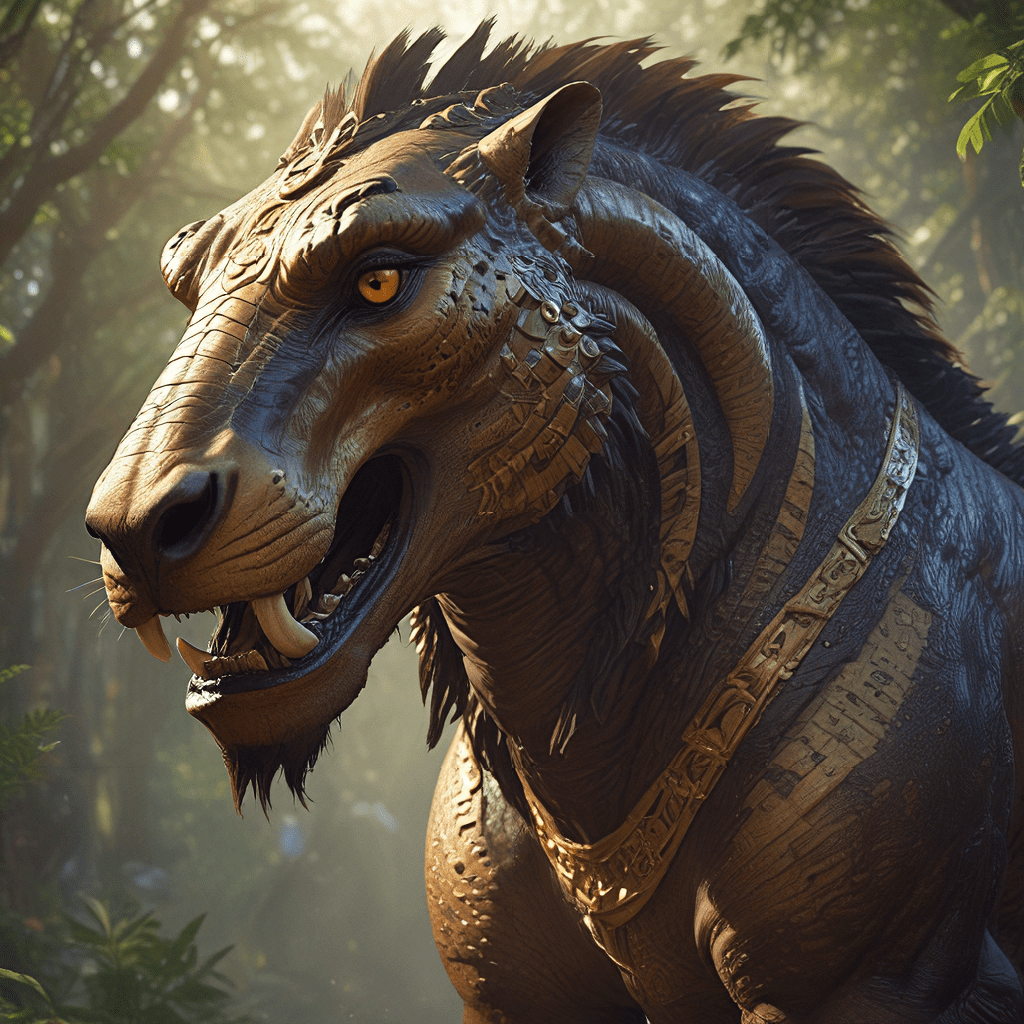The Devourer of Souls: Unveiling the Mythological Terror of the Ammit
1. Introduction: The Afterlife and its Guardians
In ancient Egypt, the concept of the afterlife was deeply ingrained in their culture and beliefs. Egyptians believed that after death, the soul, or “ka,” embarked on a journey to the underworld, a realm known as the Duat. This journey was not merely a passage to the next life but a challenging test of worthiness for eternal existence.
The Egyptians believed that divine beings, known as deities, played crucial roles in governing the afterlife. These deities judged the deceased, deciding their fate based on their actions and deeds during their earthly existence. The Ammit, a terrifying creature of myth, was one such deity, representing the ultimate consequence of a life unworthy of eternal reward.
2. The Ammit: A Hybrid Beast of Fear
The Ammit, also called “the Devourer,” was a monstrous being unlike any other in Egyptian mythology. It possessed a horrifying blend of animal features, combining the might of a lion, the ferocity of a hippopotamus, and the deadly jaws of a crocodile. This fusion of powerful predators symbolized the Ammit’s role as a fearsome judge and an unstoppable force of destruction.
The lion, known for its strength and courage, represented the Ammit’s power and dominance. The hippopotamus, notorious for its aggression and territorial nature, symbolized the Ammit’s relentless pursuit of justice. The crocodile, with its sharp teeth and deadly bite, represented the Ammit’s ultimate punishment, a consuming force that erased all traces of existence.
The Ammit’s terrifying appearance served as a constant reminder to the living of the consequences of a wicked and unjust life. It instilled fear in the hearts of the Egyptians, prompting them to strive for ethical behavior and a pure heart, ensuring their passage into the afterlife.
3. The Heart Weighing Ceremony: A Test of Worthiness
The heart-weighing ceremony, conducted in the Hall of Two Truths, was the pinnacle of the afterlife journey. It was a crucial test of the deceased’s worthiness for eternal life. The ceremony involved the god Anubis, the jackal-headed deity who guided the deceased through the Duat, and Thoth, the god of wisdom, knowledge, and magic.
Anubis, with his expertise in mummification, carefully removed the deceased’s heart, the center of their being and the embodiment of their spirit. The heart was then placed on one side of a delicate scale. On the other side, a feather, representing the goddess Ma’at, was placed, symbolizing truth, balance, and justice.
If the heart was lighter than the feather, it meant that the deceased lived an ethical life and their soul was deemed worthy of entering the afterlife. However, if the heart was heavier, it signified that the deceased had indulged in wrongdoing and their soul was destined for annihilation.
4. The Fate of the Unworthy: Consumed by the Ammit
For those whose hearts were heavier than the feather of Ma’at, the Ammit awaited. This monstrous creature, representing the embodiment of divine justice and retribution, would consume the unworthy souls, signifying their eternal damnation. The Ammit’s devouring act represented a complete erasure of existence, as if the soul never existed.
The image of the Ammit devouring a soul was a powerful symbol of divine justice. It served as a stark warning to the living, emphasizing the consequences of a life filled with wickedness and deceit. Egyptians understood that their actions in life had eternal consequences and that the Ammit’s judgment was absolute and unforgiving.
5. The Ammit’s Role in Maintaining Order
The Ammit’s presence in Egyptian mythology played a significant role in maintaining order and promoting ethical behavior. The fear of being consumed by the Ammit served as a powerful deterrent against wrongdoing. Egyptians understood that their actions in life had eternal ramifications, and the fear of divine punishment influenced their moral compass.
The Ammit’s presence in the Hall of Two Truths was a constant reminder that justice was a fundamental principle in the afterlife, and that even the most powerful individuals would face divine judgment. The Ammit served as an embodiment of cosmic balance and retribution, ensuring that the scales of justice remained balanced.
The fear of the Ammit played a crucial role in shaping Egyptian morality and societal values. It instilled a sense of responsibility and accountability, encouraging people to strive for ethical conduct and to live a life worthy of eternal reward.
6. The Ammit’s Origins: A Fusion of Ancient Beliefs
The origins of the Ammit myth are deeply intertwined with ancient Egyptian beliefs and the evolution of their pantheon. Pre-dynastic Egyptian beliefs often featured animal deities, each representing a specific aspect of nature and human behavior. These deities, such as the lion goddess Sekhmet and the hippopotamus goddess Taweret, played significant roles in protecting and guiding humans.
The Ammit, as a fusion of lion, hippopotamus, and crocodile, represents a culmination of these earlier beliefs, symbolizing the combined power and ferocity of these animal deities. The Ammit’s role as a judge and a destroyer of souls reflects the Egyptians’ understanding of divine justice and the importance of ethical conduct.
The Ammit, a terrifying hybrid beast, stands as a testament to the enduring power of myth and its ability to shape culture and morality. The Ammit’s presence in Egyptian mythology served as a reminder of the eternal consequences of our actions, reminding us to live a life worthy of reward and avoid the ultimate fate of being devoured by the Devourer of Souls.




